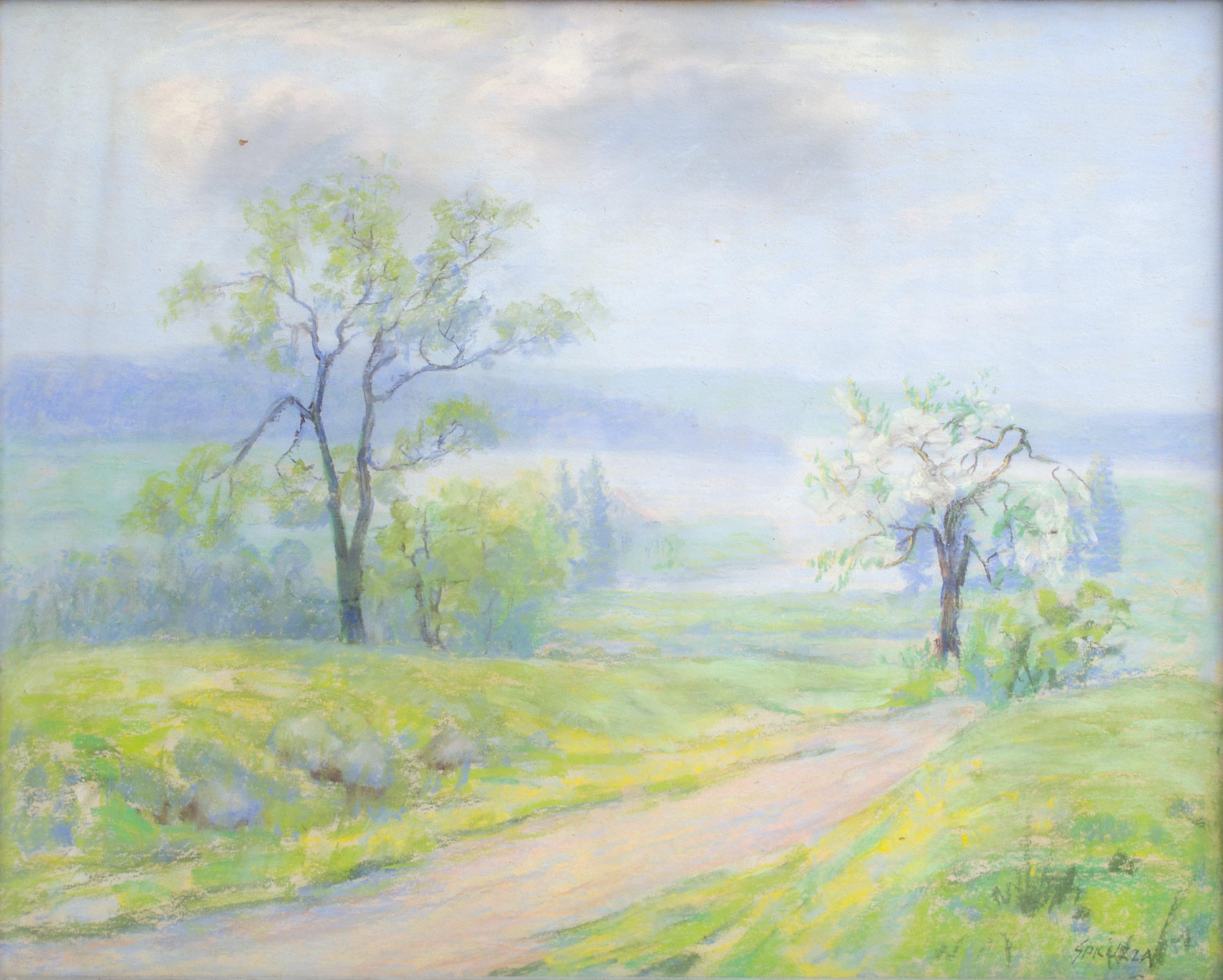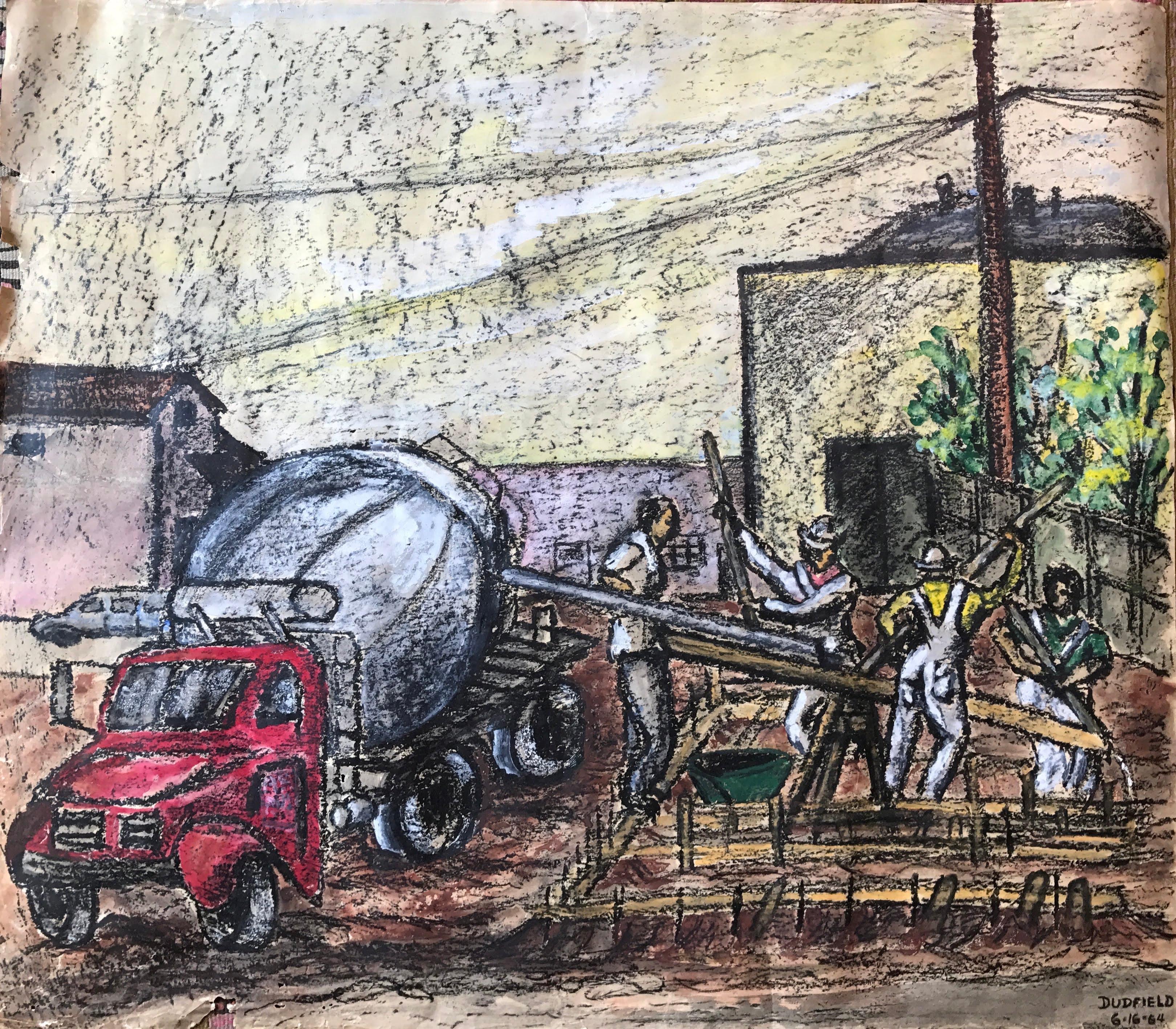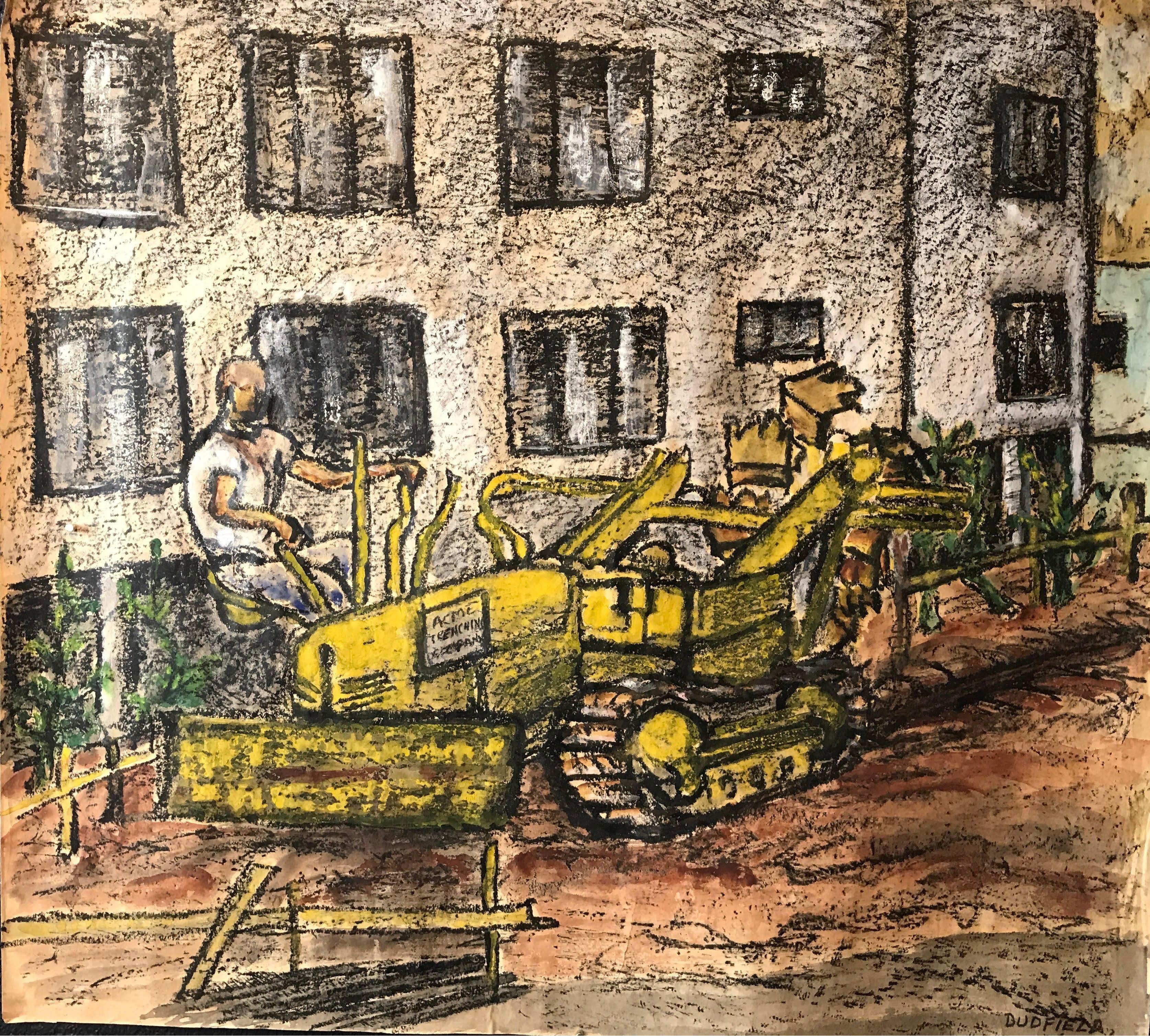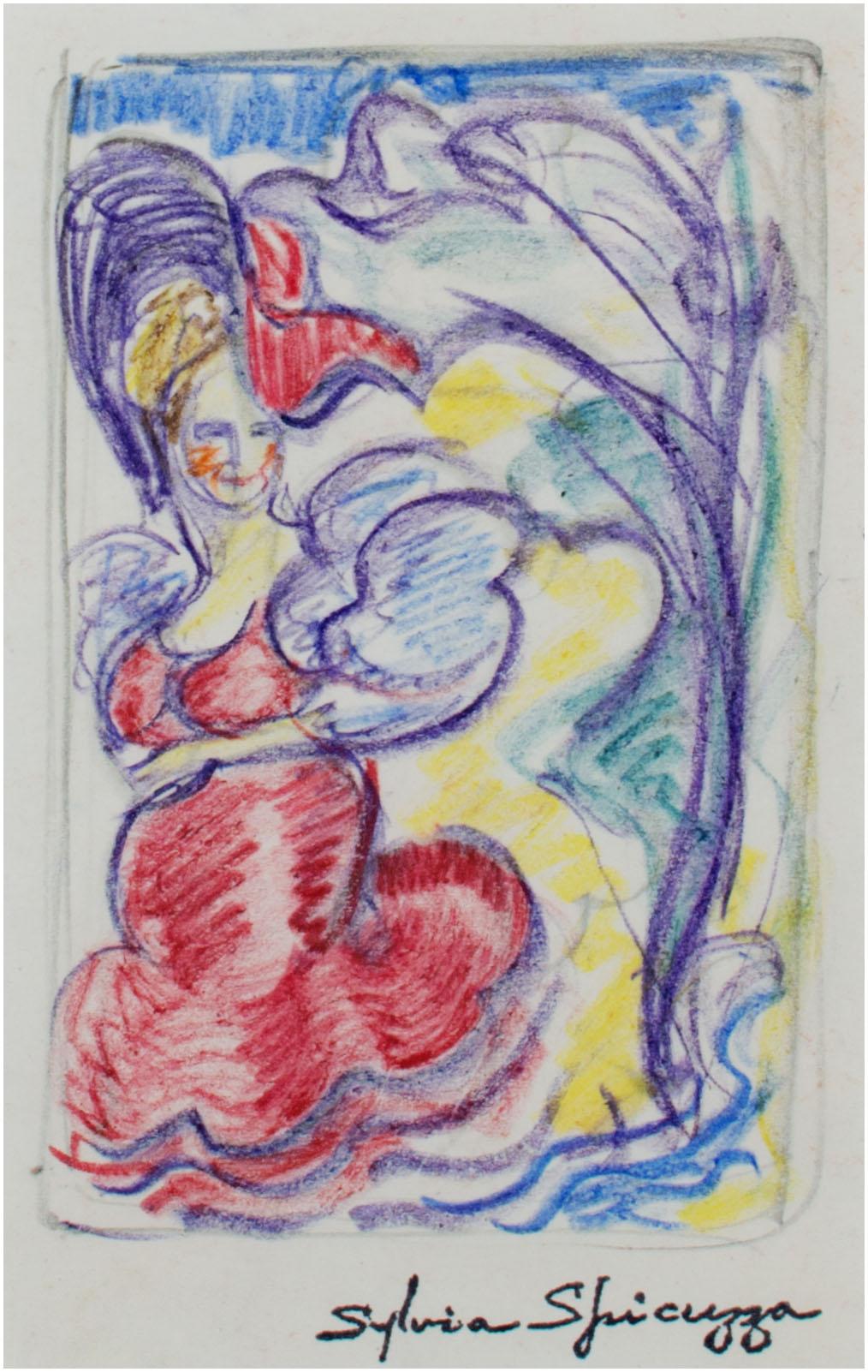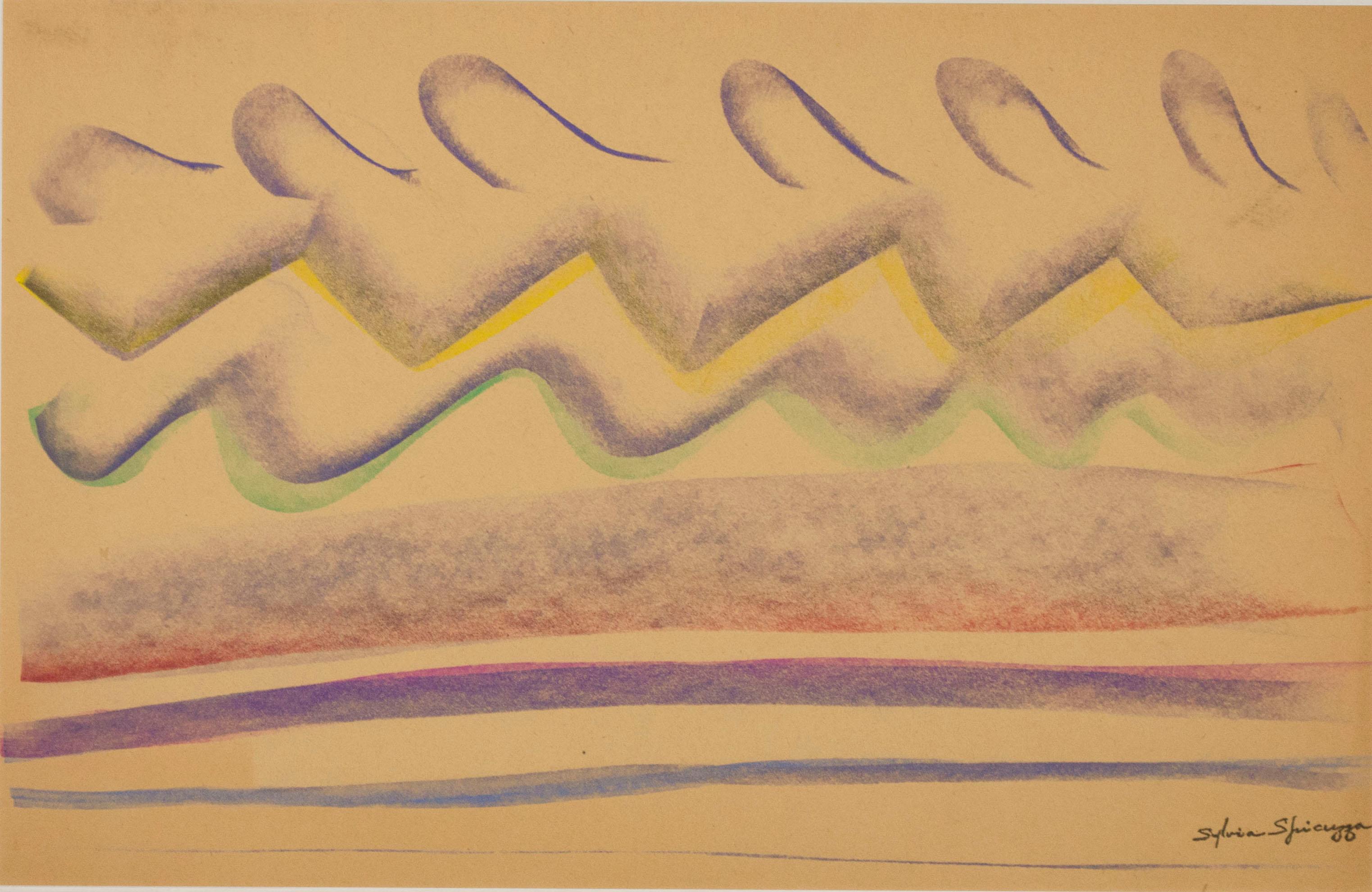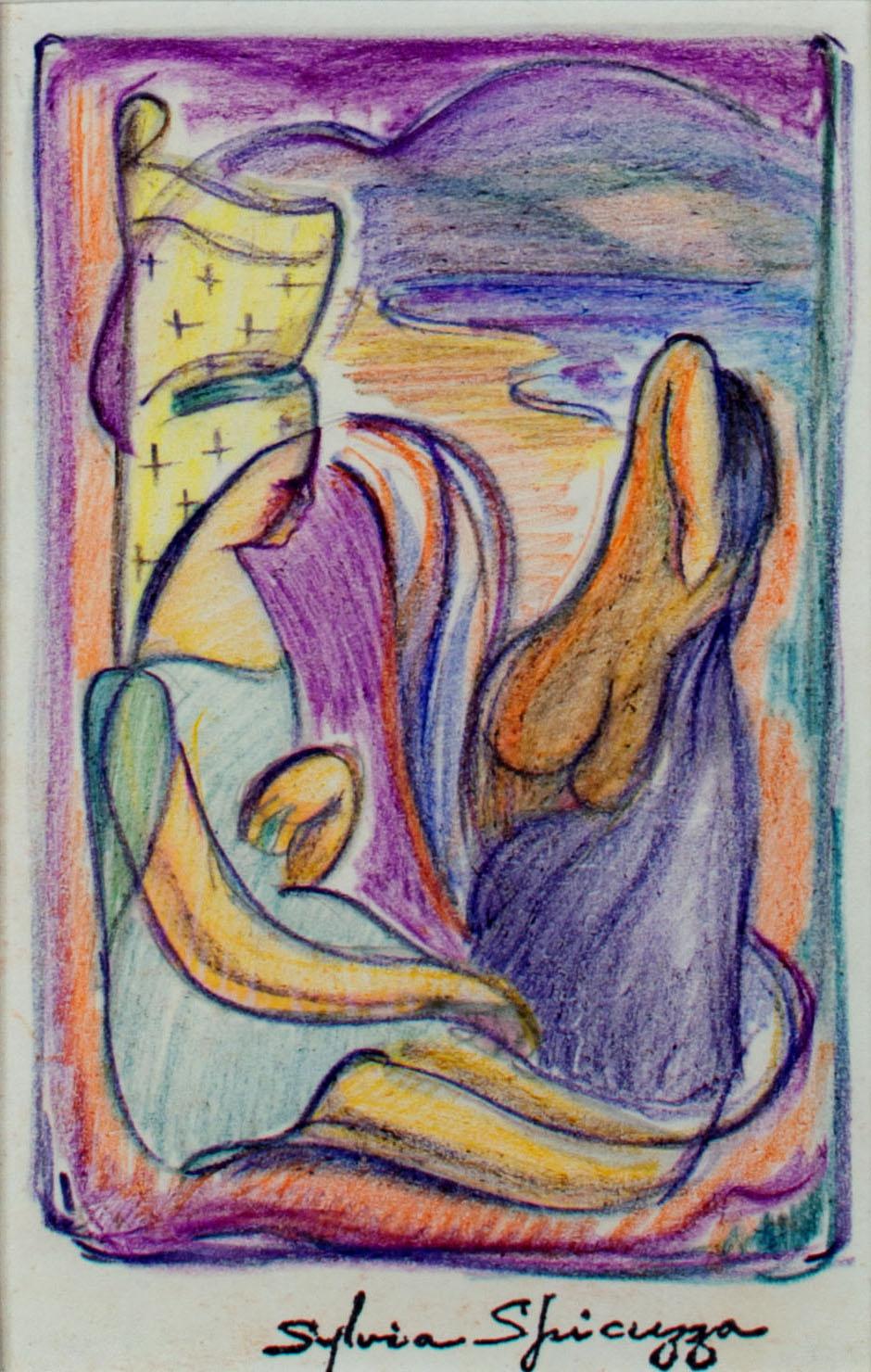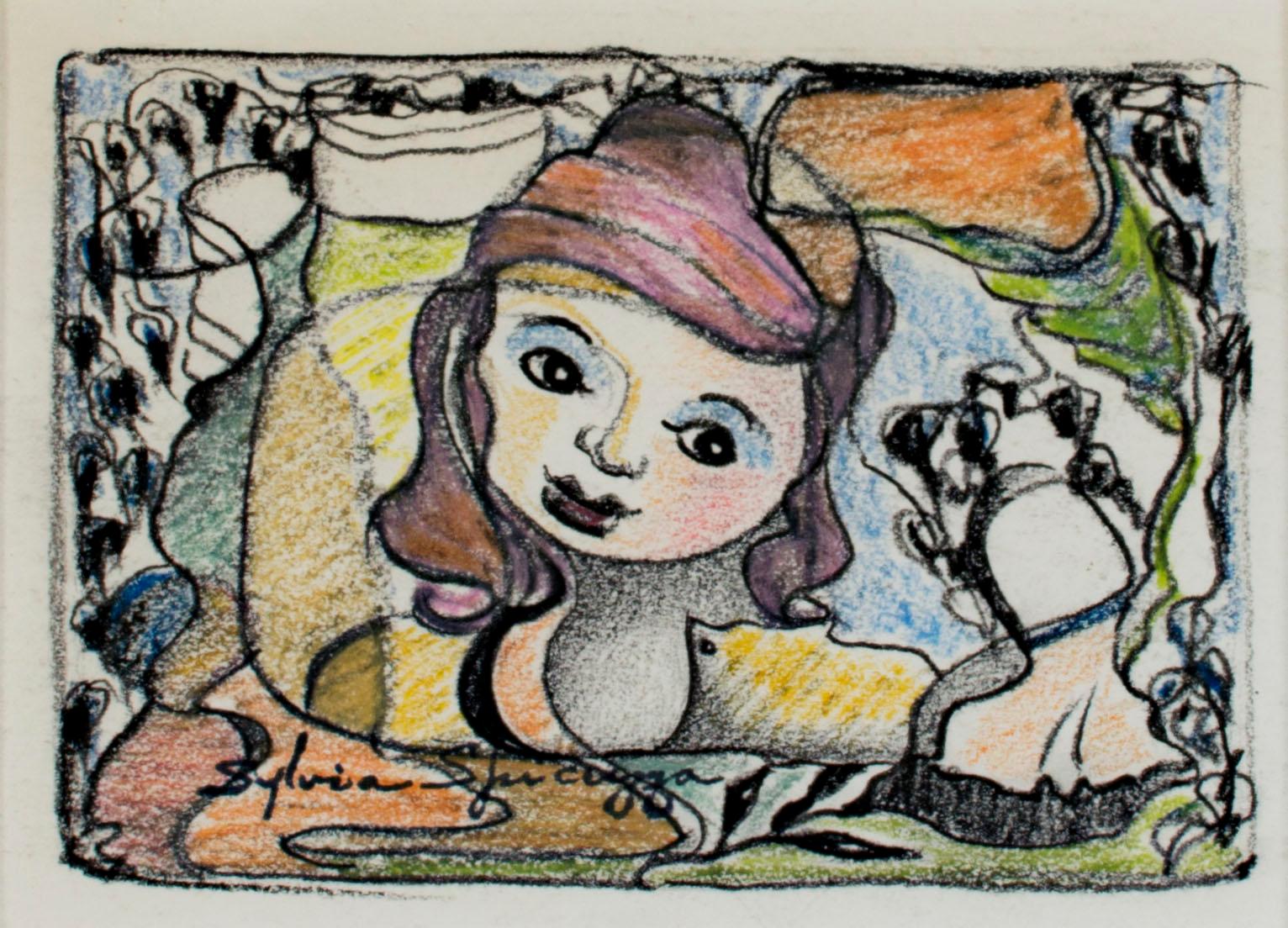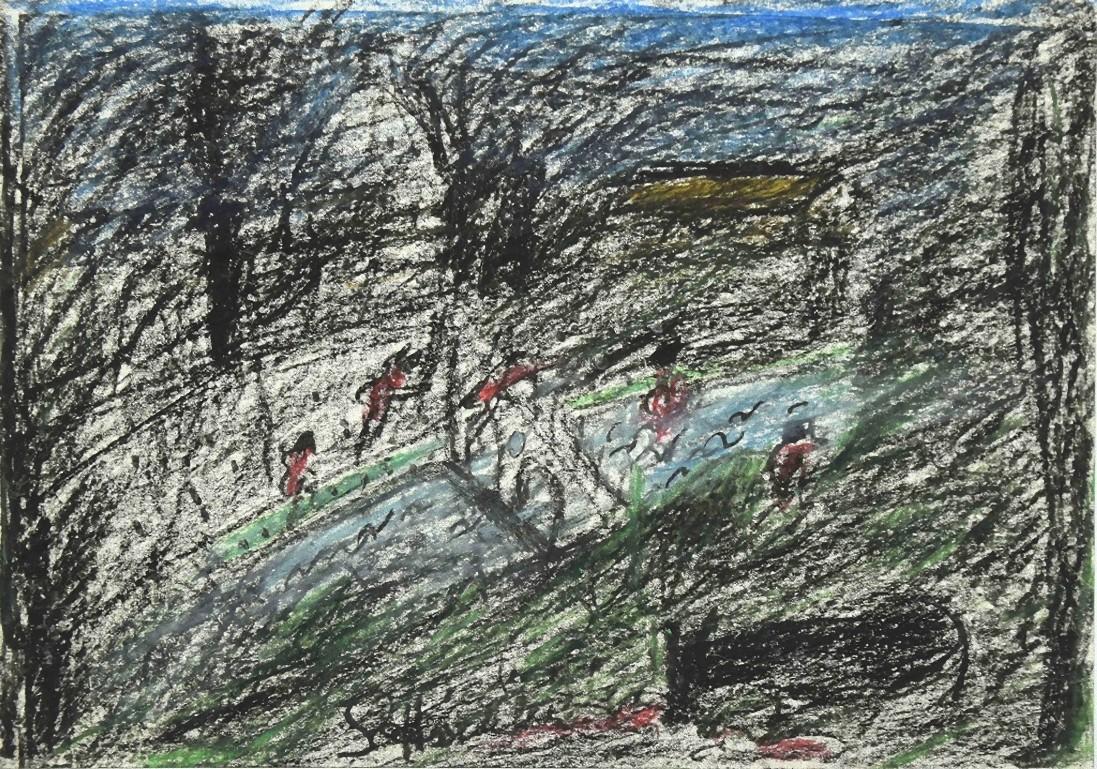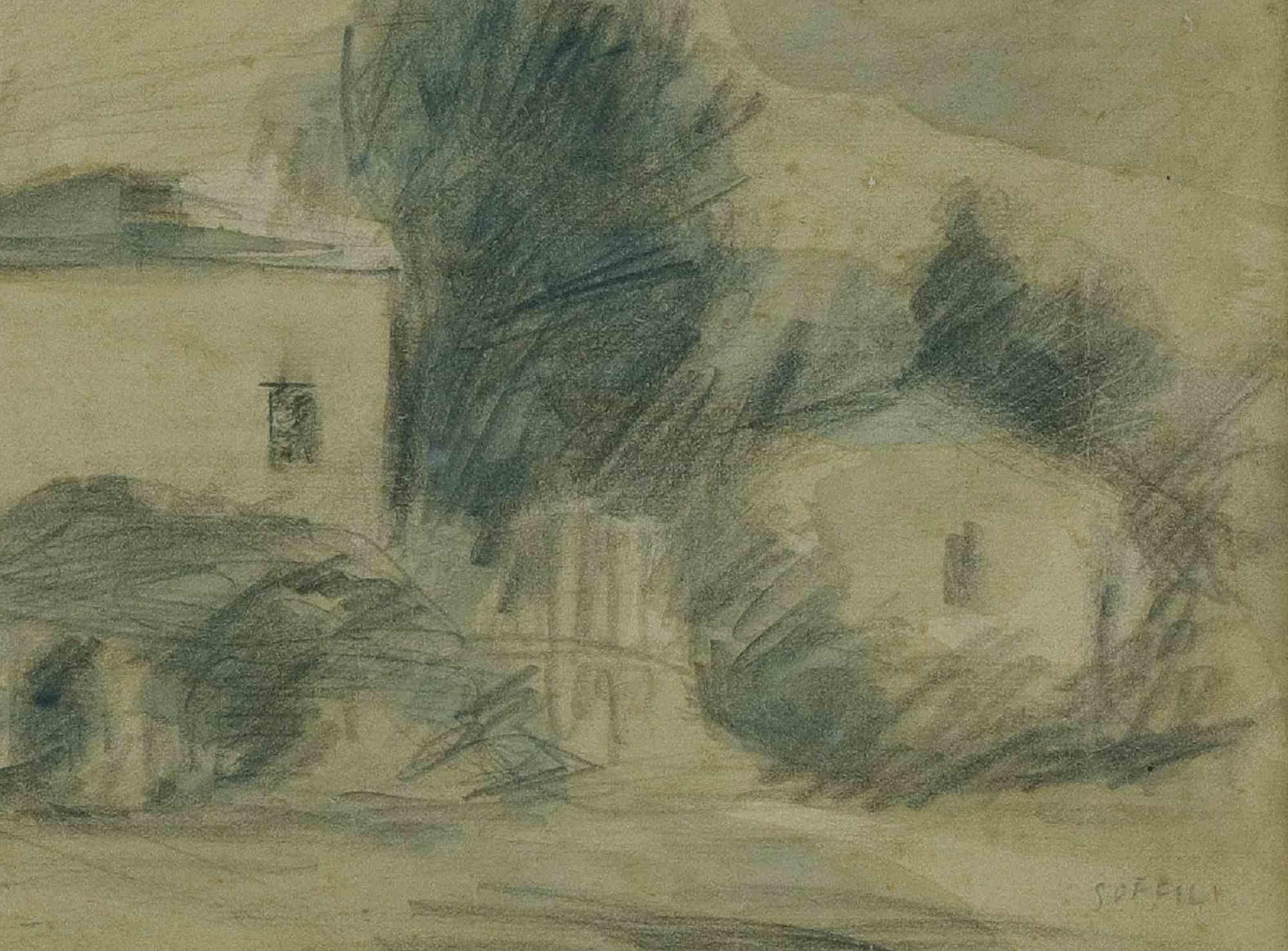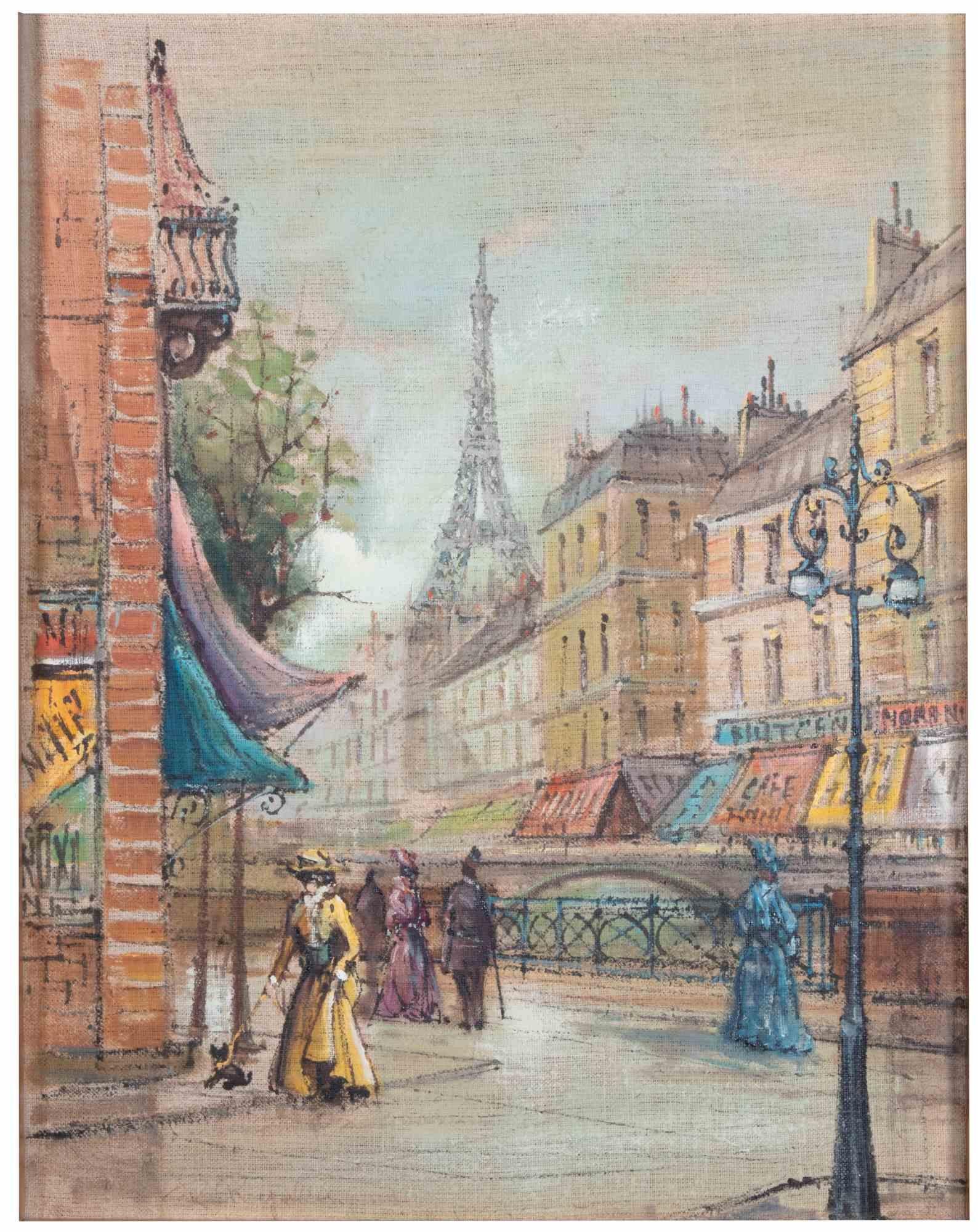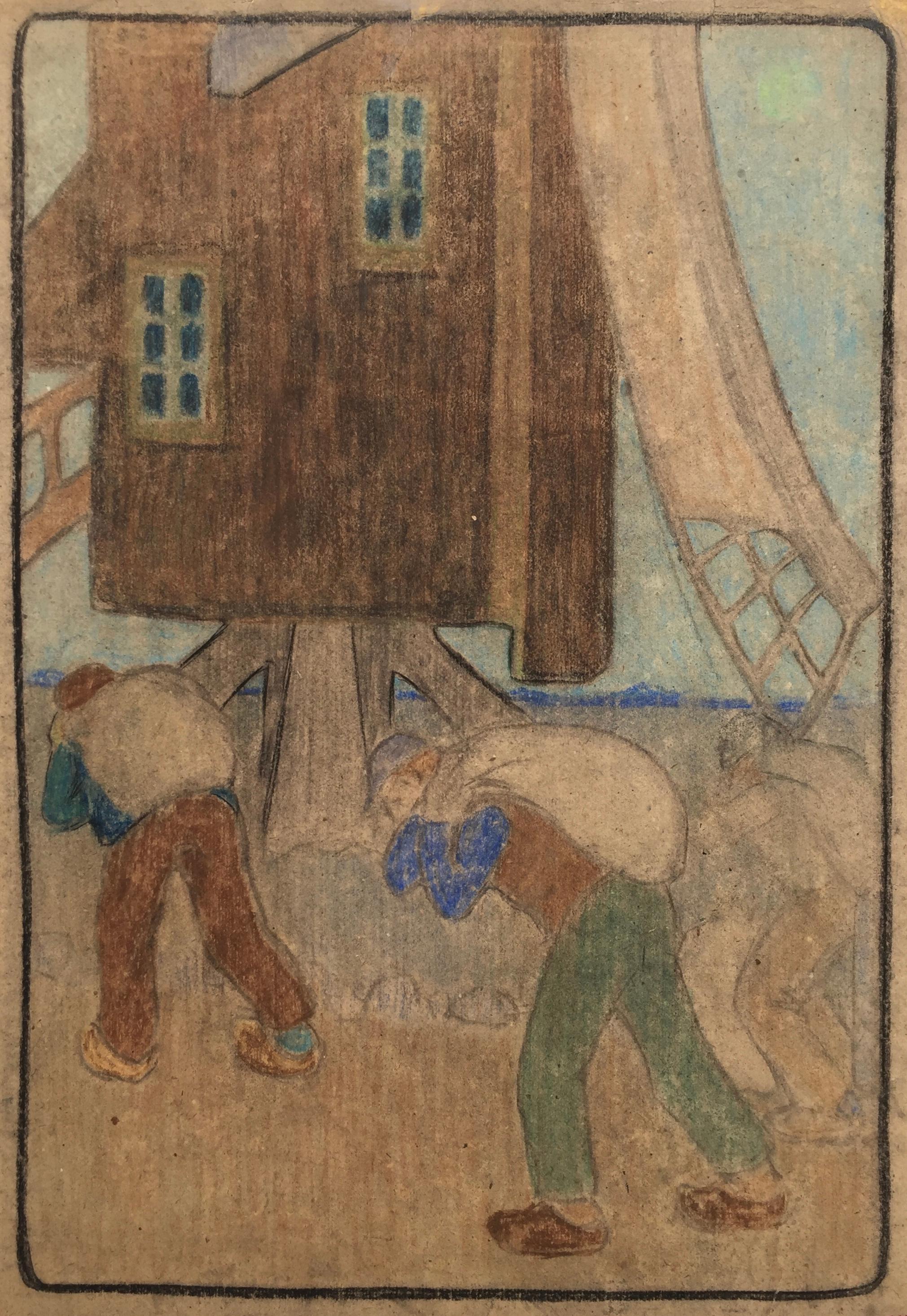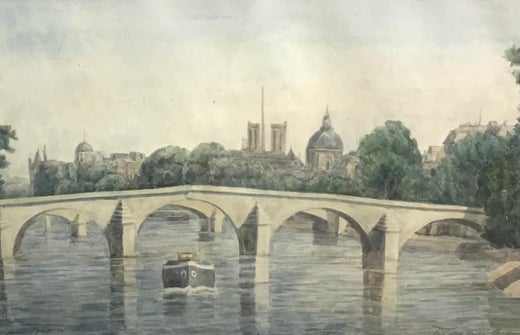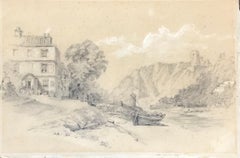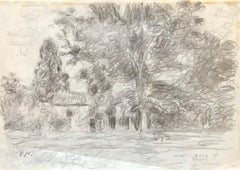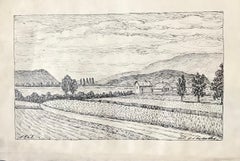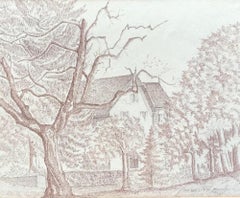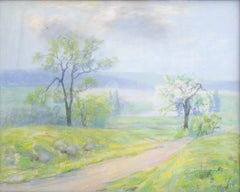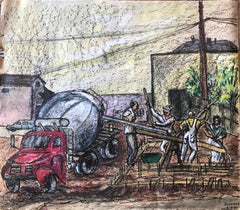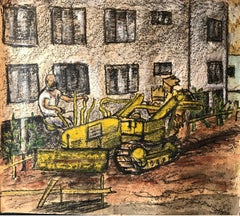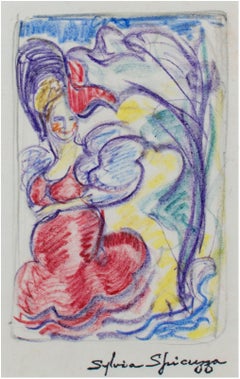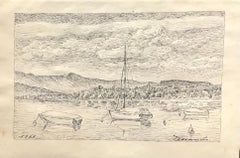
Lake of Bienne, Switzerland by Pierre Desaules - Drawing 20x29 cm
View Similar Items
Want more images or videos?
Request additional images or videos from the seller
1 of 8
Pierre DesaulesLake of Bienne, Switzerland by Pierre Desaules - Drawing 20x29 cm1968
1968
About the Item
- Creator:Pierre Desaules (1906 - 1973, Swiss)
- Creation Year:1968
- Dimensions:Height: 7.88 in (20 cm)Width: 11.62 in (29.5 cm)Depth: 0.04 in (1 mm)
- Medium:
- Movement & Style:
- Period:
- Framing:Framing Options Available
- Condition:
- Gallery Location:Geneva, CH
- Reference Number:1stDibs: LU1434210021212
Pierre Desaules
Neuchatel painter. Pierre Desaules was an artist. Pierre Desaules was born in 1906 and died in 1973. Artists like Jacques Abeille, Donald Lester Dickson, Mario Borgiotti, Renzo Agostini, and Artur Carbonell Carbonell were also born in 1906.
About the Seller
4.9
Platinum Seller
Premium sellers with a 4.7+ rating and 24-hour response times
Established in 2016
1stDibs seller since 2020
270 sales on 1stDibs
Typical response time: 1 hour
Authenticity Guarantee
In the unlikely event there’s an issue with an item’s authenticity, contact us within 1 year for a full refund. DetailsMoney-Back Guarantee
If your item is not as described, is damaged in transit, or does not arrive, contact us within 7 days for a full refund. Details24-Hour Cancellation
You have a 24-hour grace period in which to reconsider your purchase, with no questions asked.Vetted Professional Sellers
Our world-class sellers must adhere to strict standards for service and quality, maintaining the integrity of our listings.Price-Match Guarantee
If you find that a seller listed the same item for a lower price elsewhere, we’ll match it.Trusted Global Delivery
Our best-in-class carrier network provides specialized shipping options worldwide, including custom delivery.More From This Seller
View AllLandscape - Drawing on paper 26x39 cm
Located in Geneva, CH
Work on cardboard
Category
Early 20th Century Modern Landscape Drawings and Watercolors
Materials
Crayon, Pastel, Carbon Pencil
$240 Sale Price
20% Off
Landscape by Paul Mathey - Pencil on paper 30x43 cm
By Paul Mathey
Located in Geneva, CH
Work on paper
Category
Mid-20th Century Academic Landscape Drawings and Watercolors
Materials
Crayon
$160 Sale Price
20% Off
Geneva countryside and Lake Bienne, Switzerland by Pierre Desaules drawing 20x29
By Pierre Desaules
Located in Geneva, CH
Work on paper
Category
1960s Academic Landscape Drawings and Watercolors
Materials
Crayon
At Paulette's by M. Opériol - Drawing 32x41 cm
Located in Geneva, CH
Work on canton paper
Category
1970s Academic Landscape Drawings and Watercolors
Materials
Pastel
$240 Sale Price
20% Off
At the market by Jean Ducommun - Drawing 30x42 cm
Located in Geneva, CH
Work on paper without frame
Signed
Category
Mid-20th Century Academic Landscape Drawings and Watercolors
Materials
Crayon
$320 Sale Price
20% Off
A modest tribute from a student by Paul François XI - Engraving 32x50 cm
Located in Geneva, CH
Work on paper
Category
1930s Modern Landscape Drawings and Watercolors
Materials
Engraving
You May Also Like
Beautiful large impressionist pastel by Francesco Spicuzza
By Francesco Spicuzza
Located in New York, NY
Francesco Spicuzza (American, 1883-1962)
Untitled Landscape, 20th century
Pastel on paper
Sight size: 24 x 30 in.
Framed: 26 1/4 x 32 3/8 in.
Signed lower right: Spicuzza
Italian-born Francesco Spicuzza was primarily a Wisconsin painter who did portraits, still-lives and local landscapes. He spent the first part of his life in near-poverty to become a painter. An eternal optimist, in 1917, the artist reported: "I am happy and my only ambition now is to paint better and better until I shall have reached the measure of the best of which I am capable." (Spicuzza, 1917, p. 22). His predilection for beach scenes germinated early: reportedly, the five-year-old boy first drew the outlines of his father's fishing boat in the sand on the seashore near their home in Sicily. After setting himself up as a fruit peddler in Milwaukee, Spicuzza's father sent for his family when Francesco was eight years old. For the following six years the boy was unable to attend school because of his job in his father's fruit and vegetable business. The poor lad suffered a caved-in shoulder from carrying a heavy wooden crate.
The young Spicuzza was aided by moral and financial support from a sympathetic Milwaukee businessman named John Cramer, publisher and editor of the Evening Wisconsin, who raised Spicuzza's salary as a newspaper assembler so that he could attend school. In 1899 or 1900, Spicuzza began studying drawing and anatomy under Robert Schade (1861-1912), a painter of panoramas who had been trained in Munich under Carl Theodor von Piloty. Spicuzza was also taught by Alexander Mueller (1872-1935), a product of the Weimar and Munich academies. Mueller realized Spicuzza was a colorist and encouraged that orientation (Madle, 1961). Spicuzza found it beneficial to accept an apprenticeship in a lithographic studio for $8 a week, which demanded most of his time. During the St. Louis Universal Exposition in 1904, still a struggling student, Spicuzza attended the fair, thanks to Cramer. It was not long before Spicuzza received a twenty-five dollar portrait commission, and this inaugural success led to new commissions and allowed him to continue as a painter.
The earliest influences in his work appear to be from Edward H. Potthast and Maurice Prendergast, though Spicuzza never mentioned either artist. Already in August 1910, Spicuzza was described in a newspaper as "one of the most talented of Milwaukee's rising workers." He undoubtedly received lasting inspiration from his one summer study period in 1911 with John F. Carlson at the Art Students League's Summer School in Woodstock, New York. Certainly Spicuzza would have picked up spontaneity in handling the brush from Carlson. Although he executed numerous still-lives and an occasional religious work, Spicuzza is best known for his Milwaukee beach scenes populated with frolicking bathers in multi-colored attire, not unlike the images of Potthast, who used a similar technique. Many of these are small, preparatory works on canvas board executed between 1910 and 1915. Frequently with even greater animation than Potthast, Spicuzza produced moving images of youthful energy and uninhibited child's play. These beach genre scenes reflect the attitude of American impressionists who depicted the more pleasant side of life.
Spicuzza manipulated a successful balance of rich pigment applied in varying degrees of impasto texture with subtle nuances of hue. Working all'aperto, he sought "the soft enticing shades of yellow, blue, green, pink and lavender . . . to get the effects of bright glistening summer air." (L.E.S., n.d.). As a painter whose color not only derived from direct observation but also from a personal theory of color symbolism, Spicuzza traded the linear approach of lithography for dynamic patches of brilliant color. Like Prendergast, he would often tilt the angle of the picture plane to bring the viewer's position above the scene.
Spicuzza was unable to enter the 1913 Armory Show or the Panama-Pacific International Exposition two years later but he did submit work to the annual exhibitions of the Pennsylvania Academy of the Fine Arts and those of the Art Institute of Chicago. His first important award was the bronze medal presented by the St. Paul Institute in 1913, which was followed by the silver medal two years later. Before long, Spicuzza had acquired a greater sense of security in his profession and was described by a writer in International Studio (April 1917) as "an independent artist with an assured future. His pastels and water-colours are poetic and joyous bits of nature with a genuine out-of-door feeling." In 1918, his Spirit of Youth, exhibited at the National Academy of Design, sold for $112.50. Four years later, the artist achieved his greatest local recognition by winning the gold medal from the Milwaukee Art Institute.
Spicuzza spent a great deal of time painting en plein air and by 1925 he began summering at Big Cedar Lake, near West Bend, Wisconsin to gather his subject matter. Easter Morning (1926) owes something to the Symbolist movement, with its figure of Christ appearing over a seascape. During the difficult era of the Depression, patrons came to Spicuzza's aid and during the 40s, he taught housewives, businessmen and students at the Milwaukee Art Institute, the Milwaukee Art Center, and in his private studio. In the following decade, although his kind of art was no longer popular in the "make-it-or-break-it" New York gallery world, Spicuzza enjoyed regular patronage and sales. His beach scenes became more static and he would experiment with modernist techniques. Spicuzza died at the age of seventy-eight.
Sources:
L.E.S., "Do Colors Change a Person's disposition? Experiments of a Milwaukee Artist...
Category
20th Century American Modern Landscape Drawings and Watercolors
Materials
Paper, Pastel
1964 Original Pastel Watercolor Drawing Construction Workers SF Red Green Black
By Gloria Dudfield
Located in Arp, TX
Gloria Dudfield
Construction Workers and Red Truck
6-16-64
Pastel and Watercolor
41 1/2" x 36" unframed
Signed and dated in pastel lower right
Gloria (Fischer) Dudfield
July 12, 192...
Category
Late 20th Century Modern Figurative Drawings and Watercolors
Materials
Paper, Pastel, Watercolor
1964 San Francisco Construction Site Large Gouache and Pastel Landscape
By Gloria Dudfield
Located in Arp, TX
Gloria Dudfield
Tractor at Work
6-10-64
Gouache and Oil Pastel on Paper
36"x32 1/2" Unframed
Signed and dated lower right in crayon
Very Good Condition - Minor wear consistent with ...
Category
1960s American Modern Mixed Media
Materials
Paper, Oil Pastel, Gouache
"Woman in Dress & Fancy Hat" original crayon drawing by Sylvia Spicuzza
By Sylvia Spicuzza
Located in Milwaukee, WI
In this drawing, Sylvia Spicuzza takes influence from the Fauvist works of Henri Matisse, especially his famous 1904 composition "Luxe, calme et volupté." This influence is more pron...
Category
1950s Modern Figurative Drawings and Watercolors
Materials
Crayon
"Ebb and Flow" original pastel drawing by Sylvia Spicuzza
By Sylvia Spicuzza
Located in Milwaukee, WI
In this pastel drawing, Sylvia Spicuzza presents the viewer with a rhythmic view resembling waves and rolling hills. The colors of the repeating patterns and softness of the undulati...
Category
Mid-20th Century Modern Abstract Drawings and Watercolors
Materials
Pastel
"Two Women Bathers at the Beach #403" original crayon drawing by Sylvia Spicuzza
By Sylvia Spicuzza
Located in Milwaukee, WI
In this drawing, Sylvia Spicuzza is clearly taking influence from the Fauvist works of Henri Matisse, especially his famous 1904 composition "Luxe, calme et volupté." Like in that pa...
Category
1950s Modern Figurative Drawings and Watercolors
Materials
Crayon
